 Whatever the background color she was always red hot. 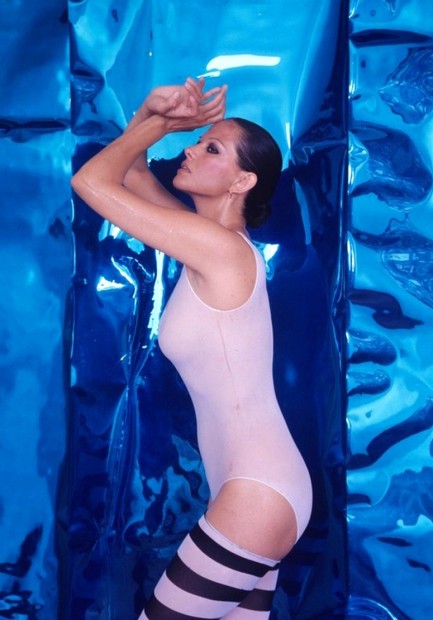 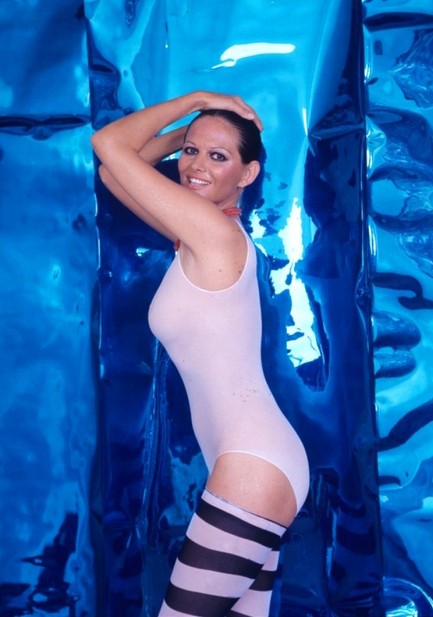 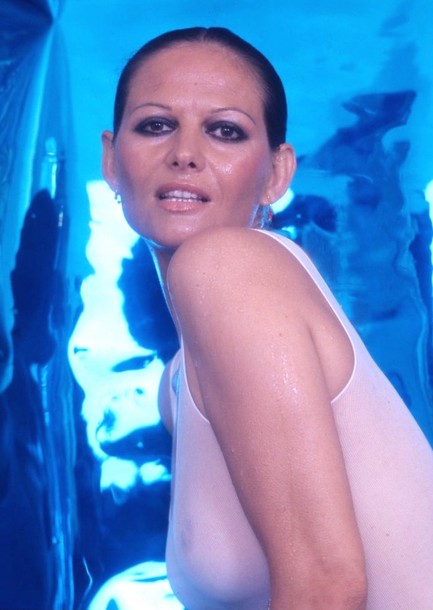
Above are three images of Tunisian born Italian actress Claudia Cardinale made by Italian photographer Angelo Frontoni. It's difficult to imagine European cinema without Frontoni. He photographed everyone, and he blurred the line between mainstream photography and erotica by collaborating with magazines like Excelsior and Playmen. Cardinale is pretty racy here by her standards. She worked with Frontoni many times over the course of her career, which began during the late 1950s and continues today, encompassing such films as 8½, The Pink Panther, Blindfold, Les pétroleuses, Fitzcarraldo, Once Upon a Time in the West, et al. These shots don't have a copyright date that we could find, but based on appearance we'd say they're from the late 1970s.
 I don't mean to smile, but it's just really fun being so much hotter than everyone else. 
They say it takes a confident woman to wear a red dress. Tunisian born Italian actress Claudia Cardinale, with her giant smile, may even be overconfident. This shot is from the Japanese cinema and pop culture magazine Roadshow. We don't have a date on it, but figure around 1968, when Cardinale was at the height of her fame.
 The first step in any investigation is to get your translations right. 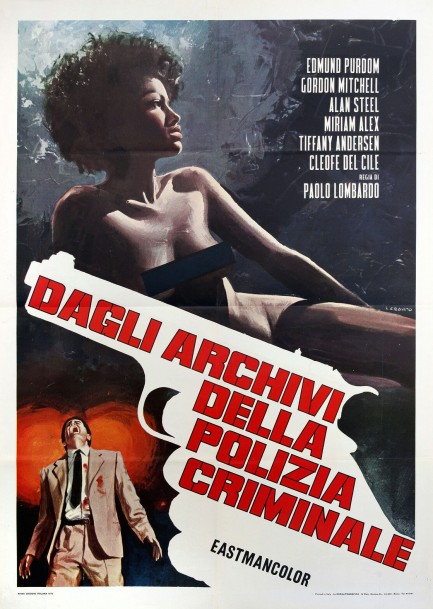
Dagli archivi della polizia criminale, which premiered in Italy today in 1973, falls into the category of Italian cinema known as poliziottesco. Apparently, this never had a U.S. release, since it lacks an English title, but the Italian title translates as “from the criminal police archives.” Sounds pretty straightforward. We gave it a watch and it's an incredibly cheesy thriller about the chase for microfilm containing information that could smash a Tunisian drug ring. The cops had it at one point, but the chief inspector stored it in the largest but least safe safe in town and it was immediately stolen by an opportunistic officer with predatory capitalist tendencies. Now the police are looking for him, the crooks are looking for him, and both the cops and robbers are taking bullets and beatings all over the place. The movie stars Edmund Purdom, a prolific but somewhat unknown actor, and has a supporting cast featuring Cleofe Del Cile, Sergio Ciani, Miriam Alex as an investigative journalist, bodybuilder Gordon Mitchell, and bodybuilt Zula, who does a nude dance number in what's supposed to be a Tunisian nightclub.
While Zula is a highlight, this production resides squarely in the atrocious category, and that's even without the disastrous English subtitles that were on the version we saw. A digression: back when we lived in Guatemala, Patrick Swayze's Road House would come on television occasionally. No idea why. The movie had been in cinemas more than a decade earlier. We guess Guatemaltecos loved Swayze's balletic moves and winning smile. Anyway, at one point Sam Elliot describes how dumb the clientele at his bar is, and tells Swayze, “This place has a sign hangin' over the urinal that says, 'Don't eat the big white mint.'” But whoever did the subtitles didn't hear “mint.” The translation they decided on was, “No te comas los grandes hombres blancos”—“Don't eat the big white men.” See what a difference that makes? And the movie was broadcast that way over and over, no correction ever made. The point is subtitles really matter. Dagli archivi della polizia criminale had really bad ones. A sampling below:
There's a gym for boxing in the nearby. In order to not get caught our men will wear some sweaters.
Look at him carefully, you have to do an oddjob on the side.
This time it's all my credit. Let me be thanked for compliments.
Don't be scared. I'm the best Teddy Webb's friend.
Miriam Alex: What sort of journalist would I be if I didn't pry into others' business? Ed Purdom: There's nothing to discover inside my business.
We did nothing but breaking his bones. If you resist the worse will happen.
What are we waiting to gun for him?
Maybe they even take offence it.
The seeing this was been the worse ever.* *Actually, we made that one up. Don't watch this movie. It's really bad. 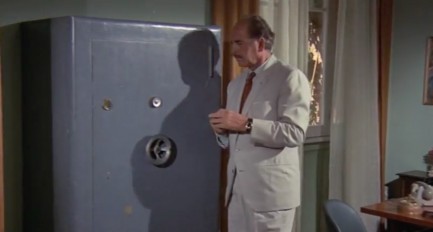 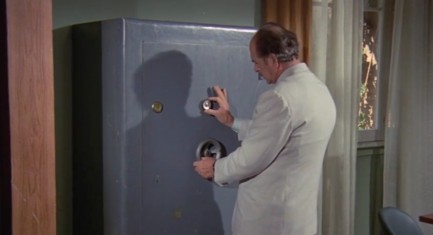 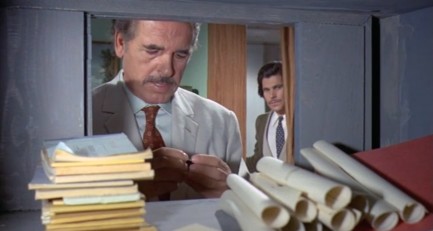 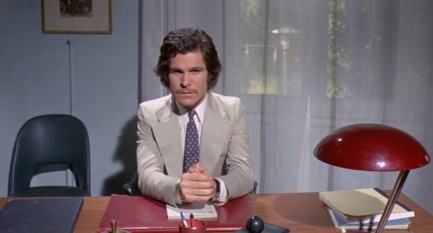 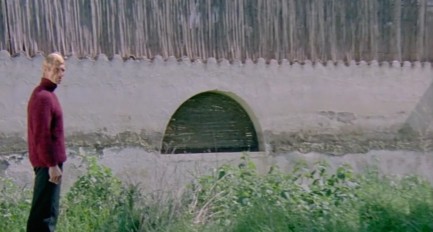 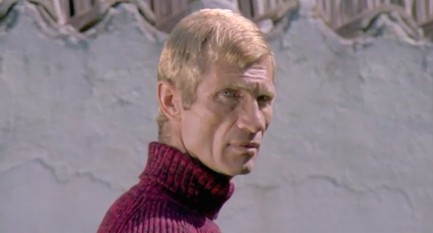 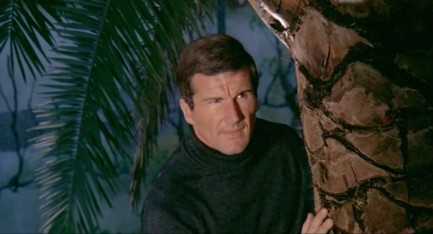 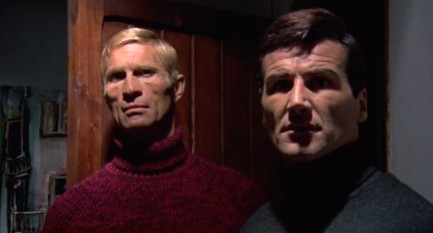 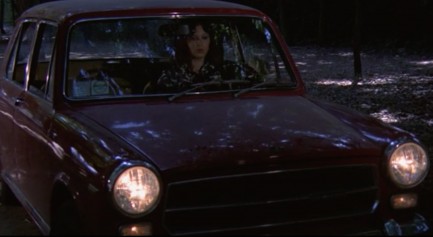 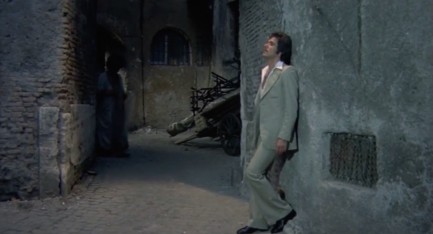 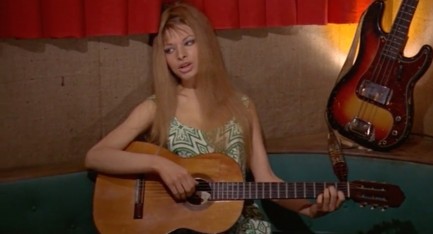 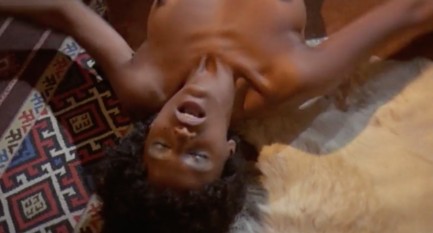 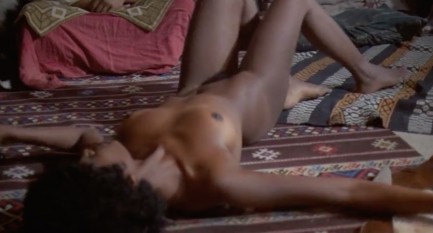 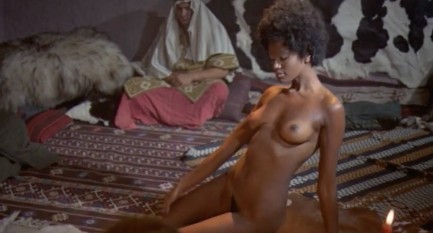 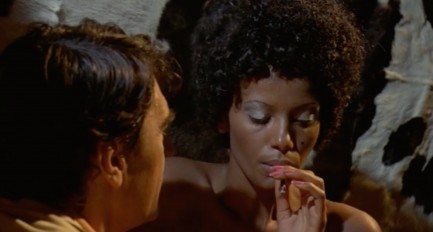 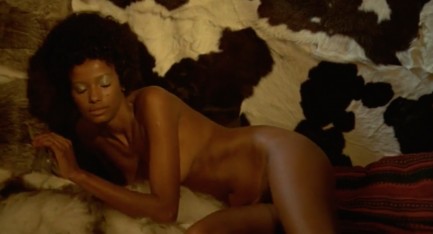 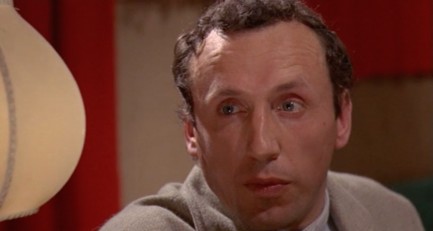 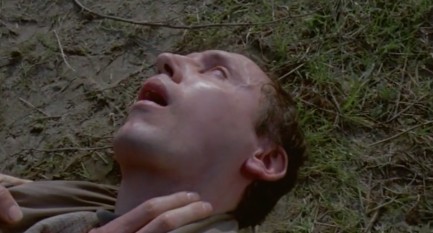 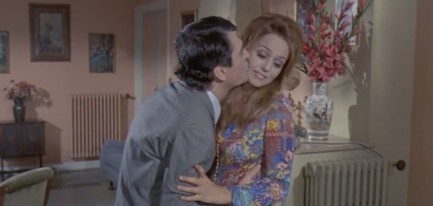 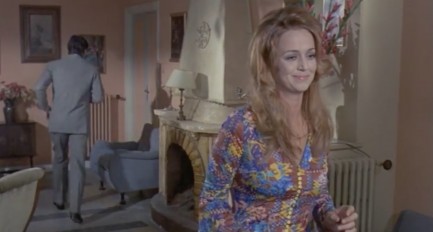 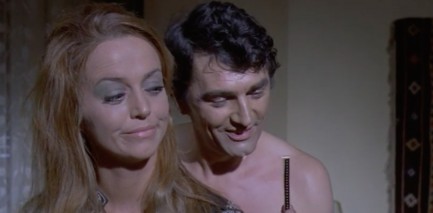  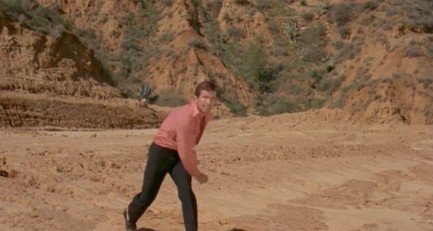 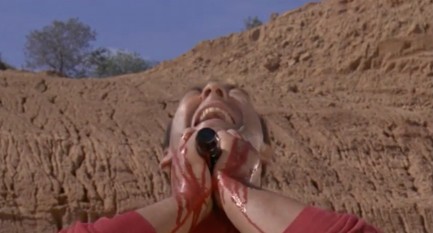 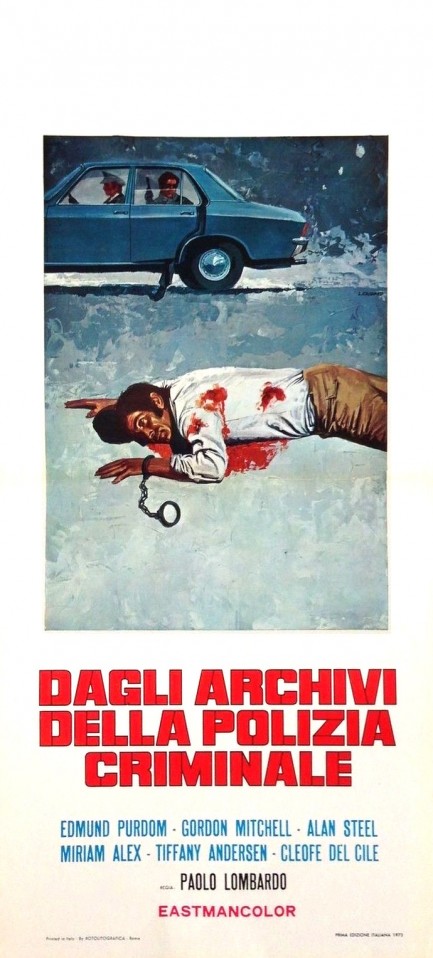
 Enquiring minds are pretty twisted. 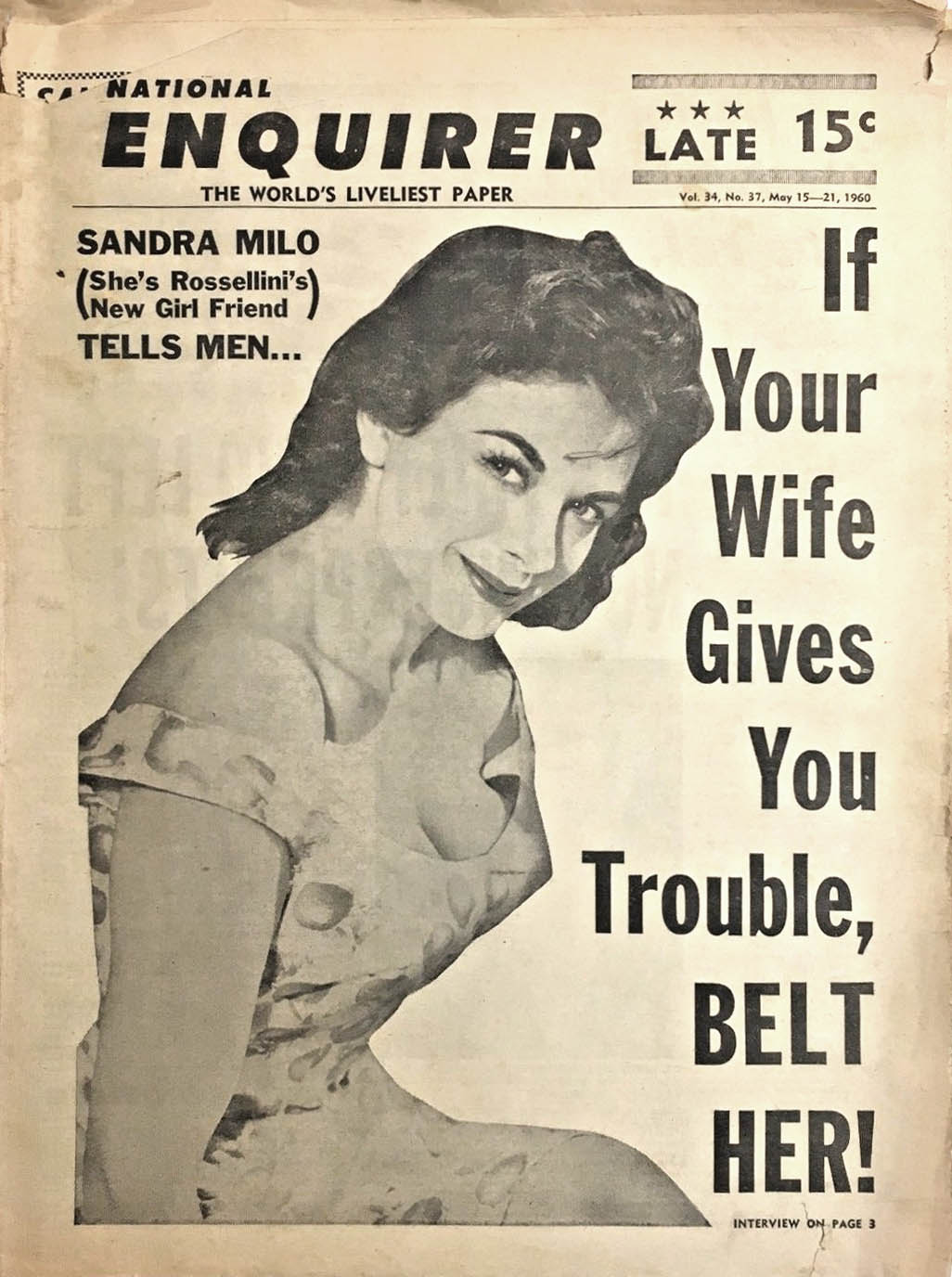
National Enquirer conjures up another sensational celebrity quote on the cover of this issue published today in 1960 featuring Tunisian born Italian actress Sandra Milo. Enquirer's modus operandi for years was to publish statements of this sort. Did Milo really say men—and by extension her paramour Roberto Rossellini—should belt women? We seriously doubt it, but you know what's still frightening? The quote probably represents Enquirer editors playing to a customer base we can picture nodding their heads and saying, “Fuckin'-a right.” The real value in these items, and the reason we share them, is because of the rare photos, which generally have never been seen online. This is another example. And you can see many more at our tabloid index here.
 Anna Karina gives an ancient place a touch of contemporary beauty. 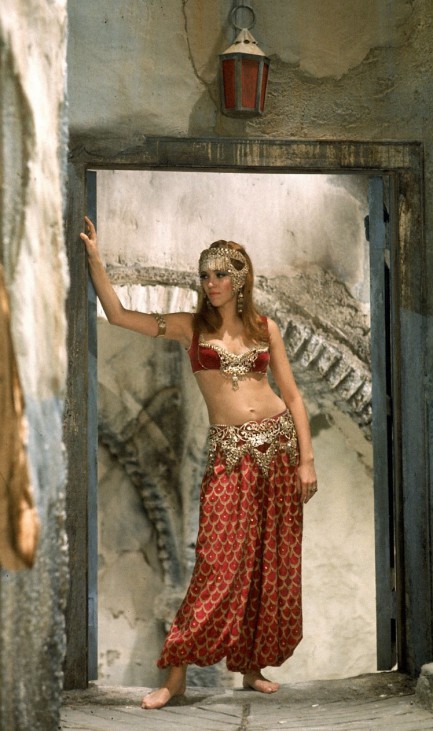
Anna Karina, née Hanne Karin Bayer, is a famed model, novelist, singer, and award-winning actress, who was a muse of French director Jean-Luc Godard, and star of such films as Alphaville, A Woman Is a Woman, and Chinese Roulette. She has also directed two movies, with the latest appearing in 2008. All very amazing, considering she was homeless and unable to speak French when she was discovered by an advertising exec in a Paris café at age seventeen. The above photo was made in Tunisia (standing in for Egypt) for her 1969 film Justine.
 Losing herself to find herself. 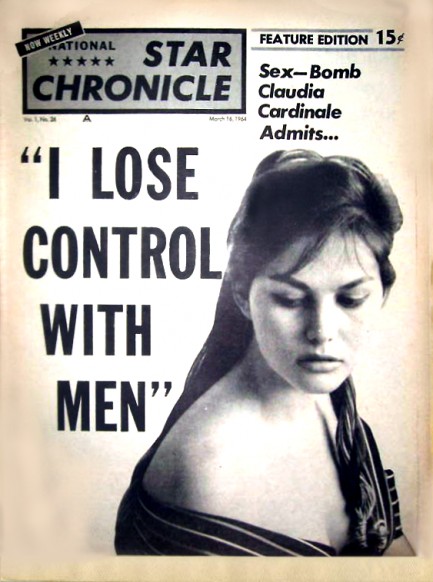
Above, a National Star Chronicle published March 16, 1964, with cover star Claudia Cardinale. Born in Tunisia, Cardinale’s career was launched in 1957 when at age eighteen she won the title Most Beautiful Girl in Tunisia. The prize was a trip to Venice. She didn't speak one word of Italian and knew little about Italy, but she was spotted by some film producers and the rest, as they say, is history.
 Through the looking glasses. 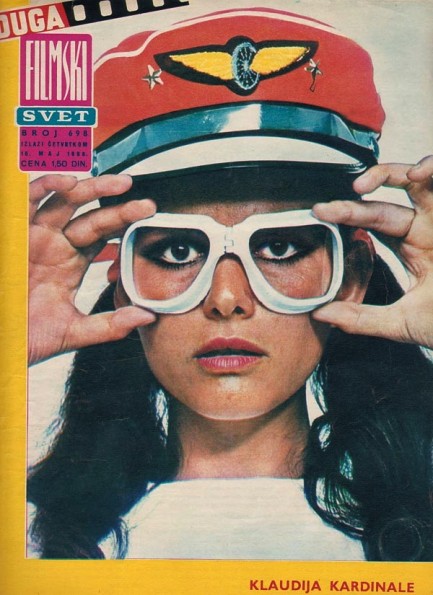
Tunisian/Italian actress Claudia Cardinale on the cover of the Yugoslavian movie magazine Filmski Svet, 1967.
|
 |

The headlines that mattered yesteryear.
2003—Hope Dies
Film legend Bob Hope dies of pneumonia two months after celebrating his 100th birthday. 1945—Churchill Given the Sack
In spite of admiring Winston Churchill as a great wartime leader, Britons elect
Clement Attlee the nation's new prime minister in a sweeping victory for the Labour Party over the Conservatives. 1952—Evita Peron Dies
Eva Duarte de Peron, aka Evita, wife of the president of the Argentine Republic, dies from cancer at age 33. Evita had brought the working classes into a position of political power never witnessed before, but was hated by the nation's powerful military class. She is lain to rest in Milan, Italy in a secret grave under a nun's name, but is eventually returned to Argentina for reburial beside her husband in 1974. 1943—Mussolini Calls It Quits
Italian dictator Benito Mussolini steps down as head of the armed forces and the government. It soon becomes clear that Il Duce did not relinquish power voluntarily, but was forced to resign after former Fascist colleagues turned against him. He is later installed by Germany as leader of the Italian Social Republic in the north of the country, but is killed by partisans in 1945.
|

|
|

It's easy. We have an uploader that makes it a snap. Use it to submit your art, text, header, and subhead. Your post can be funny, serious, or anything in between, as long as it's vintage pulp. You'll get a byline and experience the fleeting pride of free authorship. We'll edit your post for typos, but the rest is up to you. Click here to give us your best shot.

|
|













































































































